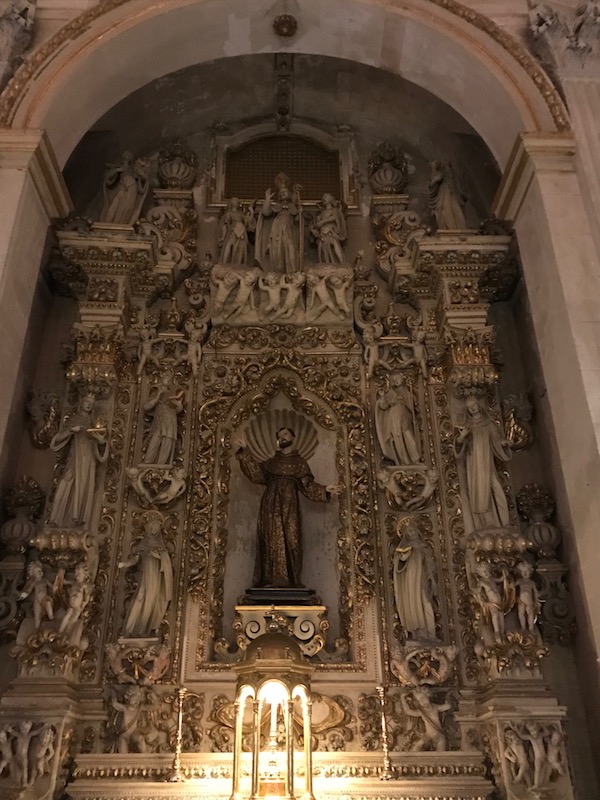Our Blog - Southern Italy - Lecce
So, we arrived in Lecce and were attempting to navigate to where our hotel was. We were a bit lost and had stopped to look at a map when a police officer came over and said "hello, are you lost"? In fact, yes, we are! was our response. We told him where we were going and he explained how to get there but also that it was within a "restricted" area and so that we would need to get the required document from the B&B owner. That wasn't a problem because the car wasn't going anywhere until we were leaving. We got to park inside the building in the courtyard where there was space for only 1 car. When we left, I attempted to turn around inside the building (big mistake) and ended up just going back to the way it was and backing out.
So now, the hotel ... I've included a few of our hotels in the blog, but only really the ones that were better-than-the-norm. This one is probably the most unique place we have stayed in several vacations. It is called "Historical Suites VVM" and it was both a suite, and historical. It is, literally, a historical palace from the 19th century. This is our suite, with period furniture, original 19th-century floors and vaulted, frescoed ceilings. It was also a perfect location just a block from the Duomo so it was very convenient to get to all of the major sights on foot.






And then from our 2 balconies, a view of the main pedestrian street running through the old town, Via Vittorio Emanuele II.


A few night pictures of the Piazza Duomo including the Duomo (Cathedral), bell tower, and Bishop's Palace.

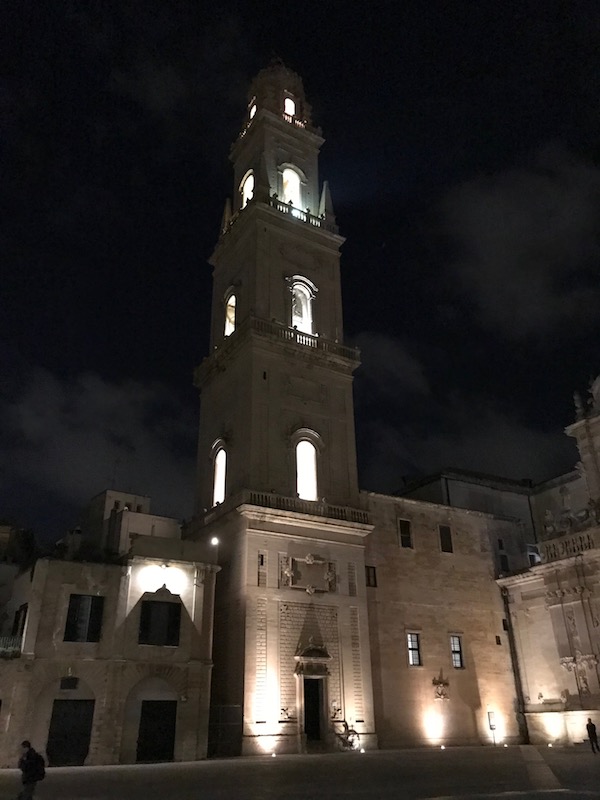

The next morning, we started back in Piazza Duomo, to get a better look at things there. The seminary was completed in 1729 and is one of the best examples of Baroque architecture in the city. The vertical columns define 8 bays symmetrically distributed across the front, and the top has a long balustrade.

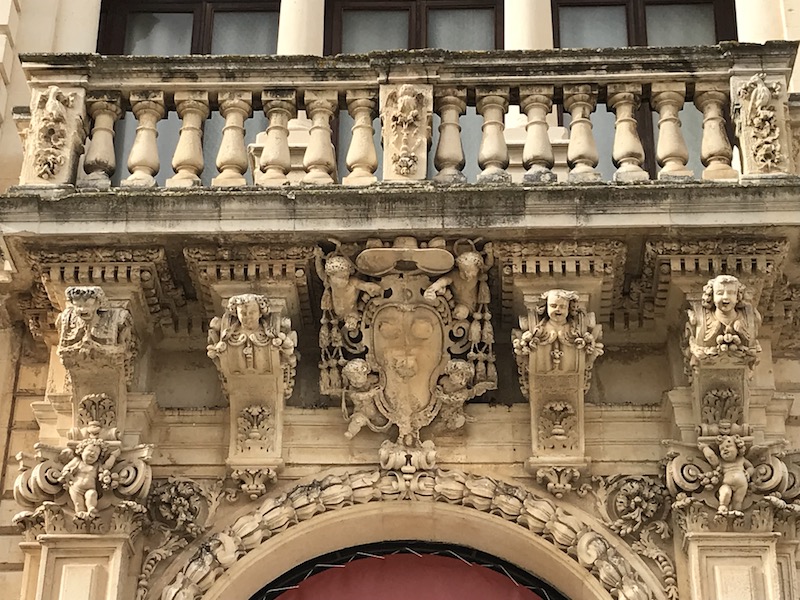
Then turning the corner is the The 17th century Palazzo Vescovile, or Bishop's Palace. The façade has arches, stone balconies, carved decoration, as well as a set of statues.
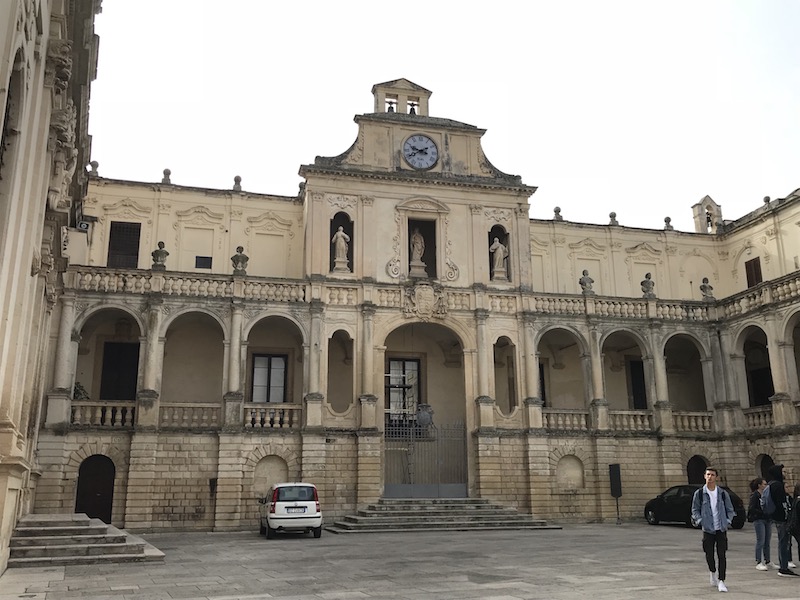
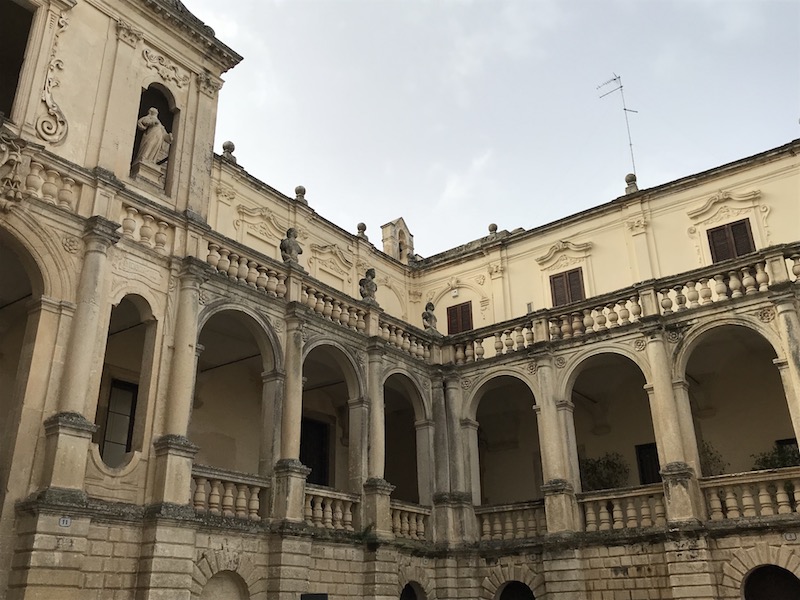
And then the Cathedral, the Duomo dell'Assunta, dedicated to the assumption of the Virgin. It was originally built during the Norman rule in 1114 and then renovated during Swabian rule in 1230, and again between 1659 and 1670 during the Baroque period. The cathedral has a Latin-Cross plan with three naves divided by columns.

There are twelve side chapels, each with its own altar. The first is the chapel of the Nativity, with the nativity scene dating back to the 16th-century.
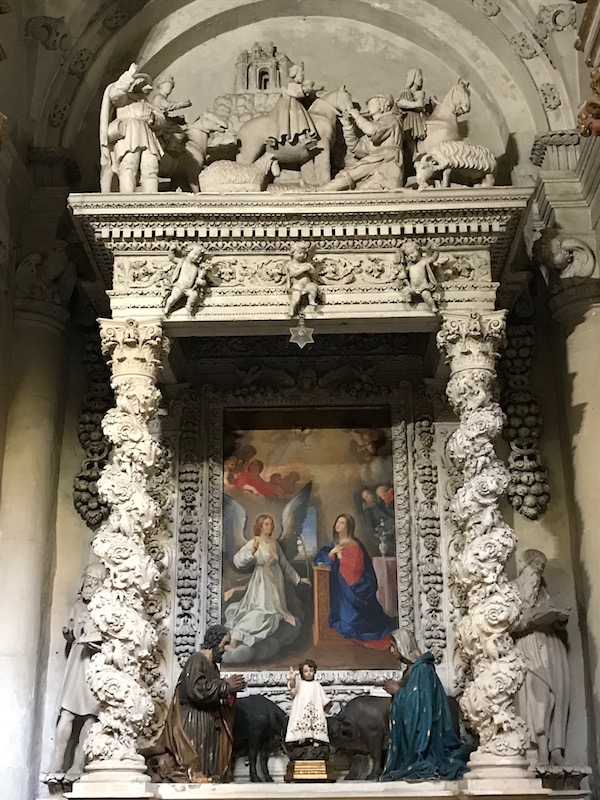
The chapel of Saint Just was done in 1656 and is, as you can tell, very Baroque.


The chapel of the Crucifixion of Jesus and the Blessed Sacrament, finished in 1780.


This is the cupola with its rich decoration.


Trying to get a good view of the coffered wood ceiling, created in 1685, with paintings by Giuseppe da Brindisi which show the Preaching of Saint Orontius, the Protection from the Plague, the Martyrdom of Saint Orontius, and the Last Supper (the one shown).

The chapel of the Immaculate Conception is one of the most recent chapels, only going back to 1689.

And the chapel of Saint Anthony of Padua from 1674. I've seen lots of chapels to Saint Anthony of Padua in France and Italy. While he was Portuguese, he occasionally taught at the universities in Montpellier and Toulouse in France, as well as doing much of his work in Italy (Sicily, Bologna, and eventually dying in Padua).

There aren't that many stained glass windows in Italian churches as there are in French ones, but there were a couple here.

Chiesa di San Giovanni Battista, which I didn't get a picture of because they were doing work on the exterior, but I found one on the web (Attributed to: By Velvet [CC BY-SA 4.0 ], from Wikimedia Commons). It was built for the Dominicans between 1691 and 1728 and is located just inside of one of the ancient gates, Porta Rudiae. And you can see from the picture (which we couldn't see while we were there), the façade is quite elaborate.
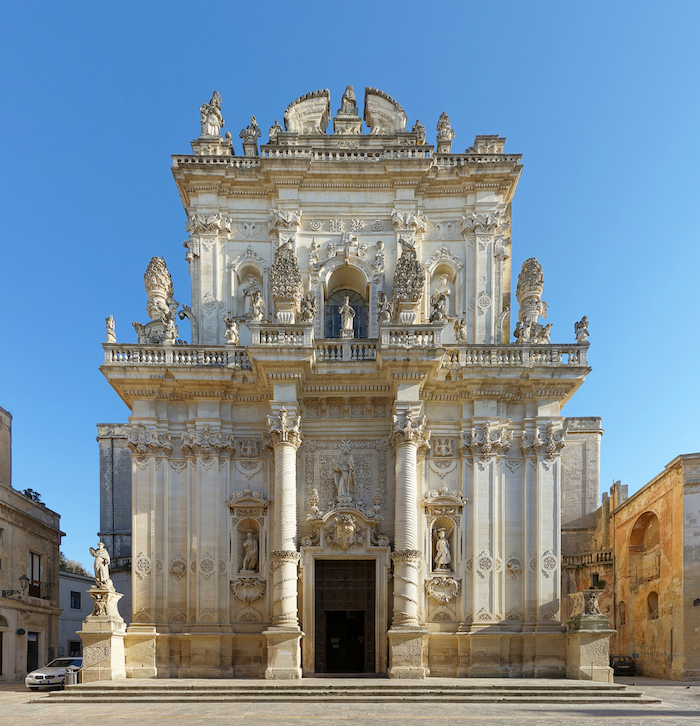
The interior is a Greek cross and in addition to the main altar and the two altars that you can see on angles on the right and left of the main altar, there are multiple other altars around the exterior.


Of particular interest is the chiseled pulpit with the scene of the vision of the Apocalypse, the only one of the churches in Lecce to be made of stone.

All around the interior are carved angels.


I mentioned that it was next to Porta Rudiae, which is one of the gates to the city. This specific gate was built in 1703 after the previous gate collapsed near the end of the 17th century. On the top of each of the 4 columns is a bust of one of the mythical founders of the city: Malennio, Dauno, Euippa, and Idomeneo. The gate is sometimes called Sant'Oronzo because of the large statue on the top, which is of Saint Oronzo, the protector of Lecce. You can still see the ancient city walls attached to it.



We walked a bit outside of the walls, reaching Porta Napoli and the Obelisk of Lecce. The Obelisk was built in 1822 to commemorate the arrival in Lecce of Ferdinando Di Borbone. It is a square-shaped column decorated with bas-relief decorations.

Porta Napoli was built in 1548 in honor of the Habsburg Emperor Charles V and gets its name from leading to the city of Naples. In the center of the triangular gable is the imperial Hapsburg coat of arms of Charles V as well as depictions of cannons and armor, reminiscent of the Roman triumphal arches.
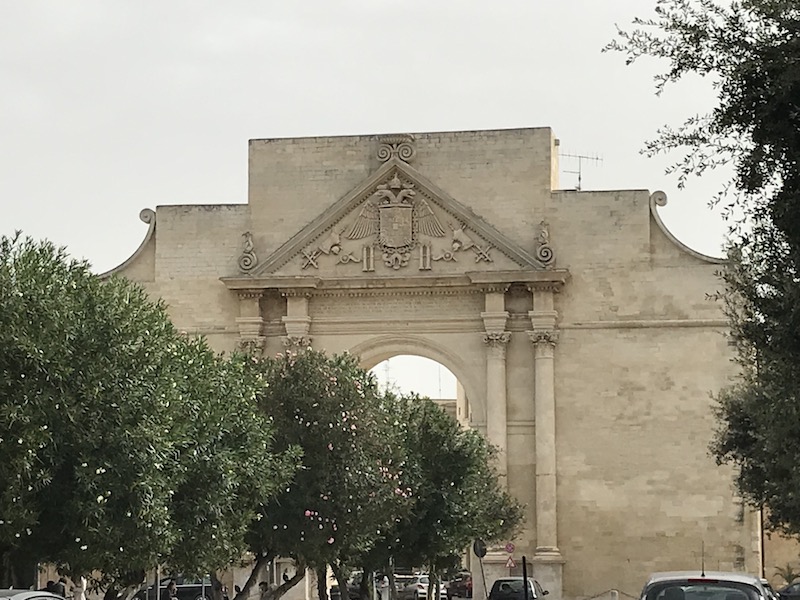

This large gate is how you enter the Monumental cemetery of Lecce.

After walking through the funeral garden, we arrived at the Church of Saints Niccolò and Cataldo. It was originally built in 1180 along with the adjoining monastery and then rebuilt in the 1716 by the Olivetans monks using (mostly) the Baroque style. The façade actually shows both the severity of the Apulian Romanesque and the exuberance of Baroque. The large doorway is the original one from 1180. In the rebuilding, ten stone statues were added as well as the monumental top, which contains the emblem of the Olivetans, consisting of a cross and olive branches. We could never figure out when the church was open, so we only got to admire the exterior and walk through the cemetery.



Yet another church that was "under wraps" for work, the Basilica of Santa Croce was our next stop. In the 14th century, a monastery was founded in this location, and a new church started in 1549. The work was really slow ... the lower façade finished in 1582, dome in 1590, doors in 1606, and finally opened in 1695. Again, I grabbed a picture off the web (By Tango7174 - Own work, CC BY-SA 4.0, https://commons.wikimedia.org/w/index.php?curid=14639639) to show you what it supposedly looks like.
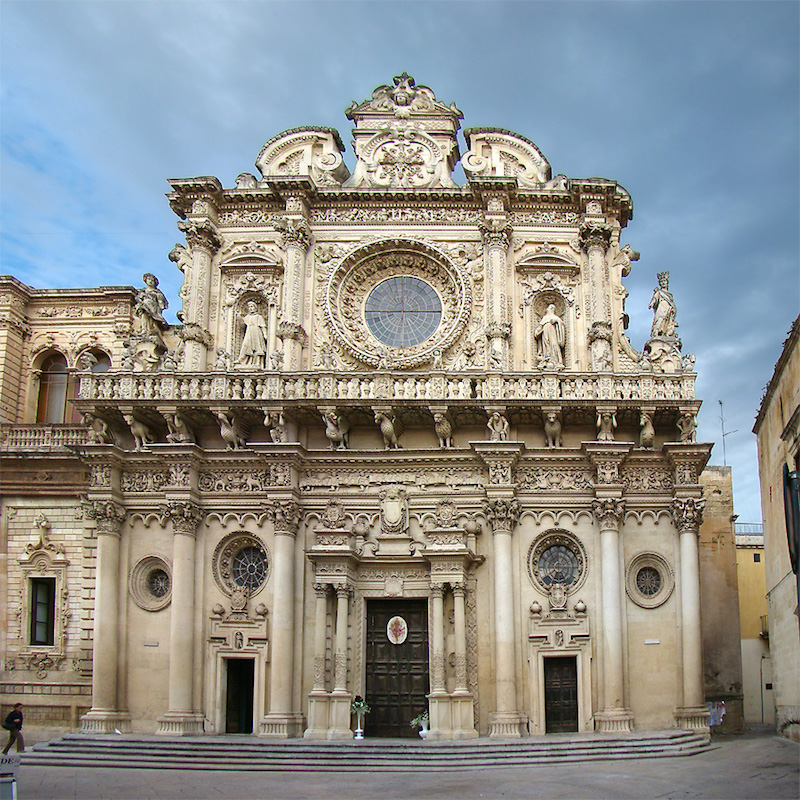
The interior is a Latin cross plan. It originally had a nave and four aisles but in the 18th century, 2 of the aisles were turned into side chapels. The church has 17 altars (yes, I did say 17 altars!) This has another amazing wooden caisson ceiling with paintings. At the top of the columns that create the nave and aisles, the capitals are very richly decorated.



And a few pictures of the Baroque altars ... pictures really don't do the intricate carvings justice.




Next door (well, I think attached to the Basilica) is the Palace of Celestini. This building dates back to 1549, when the original Convent of the Celestines was demolished to expand the city walls and build the Castle of Charles V. As you can see, it is highly decorated although supposedly the decorations were changed after 1807 when it changed from a monastery to a government building.

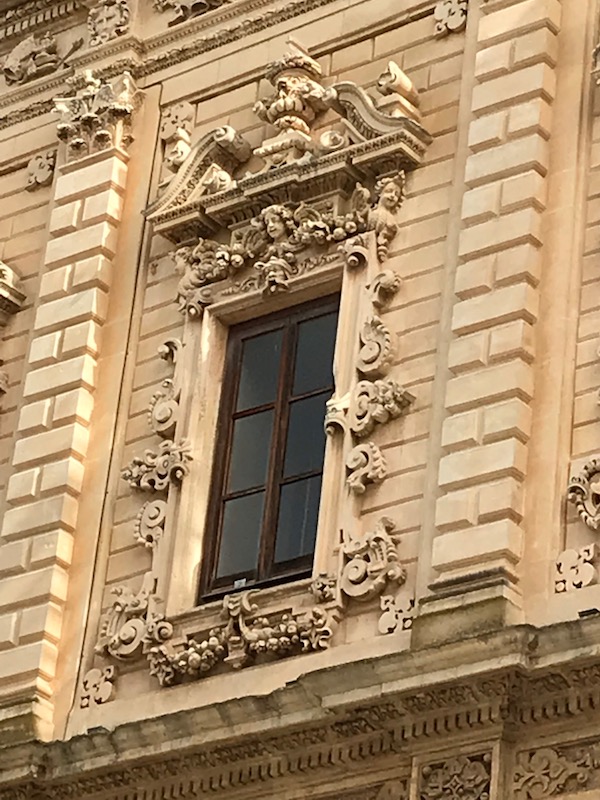
One of the interesting things about some of these really old cities in Europe is that you happen to be walking down a tiny little alley and, bam, you run into a Roman Theatre. It was built in the 2nd century but then forgotten, covered by gardens and palaces, until it was rediscovered in 1929. It was built according to the Greek style (seats built up on a slope), with enough space for 4000 spectators. The first picture is a model that tries to show the theater (left side) along with the amphitheater (that you'll see next).




They also have a museum that gives a good overview of Roman theater, specifically things like the Comedy and Tragedy. It also had examples of the masks that the actors would wear, which where large and exaggerated facial expressions.

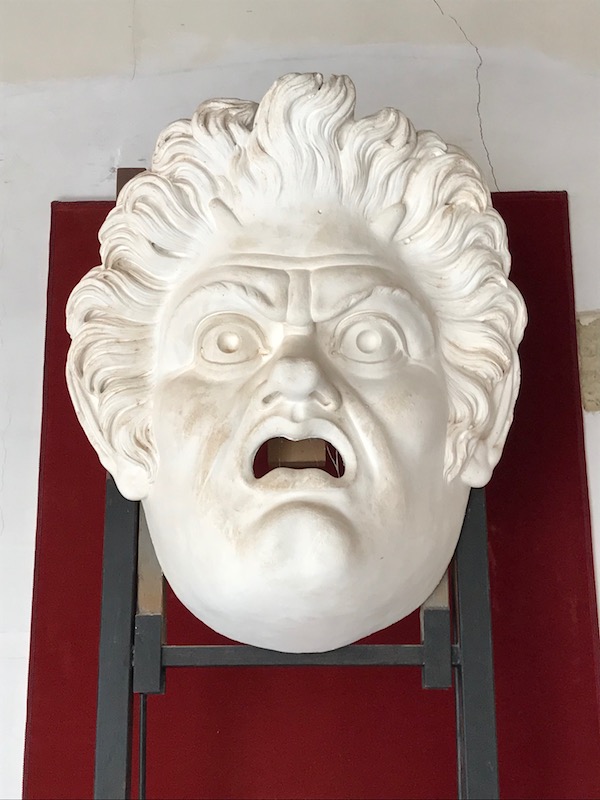

Right in the middle of town, in piazza Sant'Oronzo, you find a Roman Amphitheater. Featuring an elliptical layout, it is still partly buried underneath the piazza and buildings around it. The amphitheater would have been on the eastern outskirts of the city in Roman times and was capable of seating up to 14,000 spectators. You can still see the lower tier of seats..the upper seats are gone but you can see the large arches that would have held the upper tier.




We then stopped by Caffè Alvino (right in Piazza Sant-Oronzo) and tried a Lecce specialty called caffè in ghiaccio con latte di mandorla (espresso with ice and almond milk).
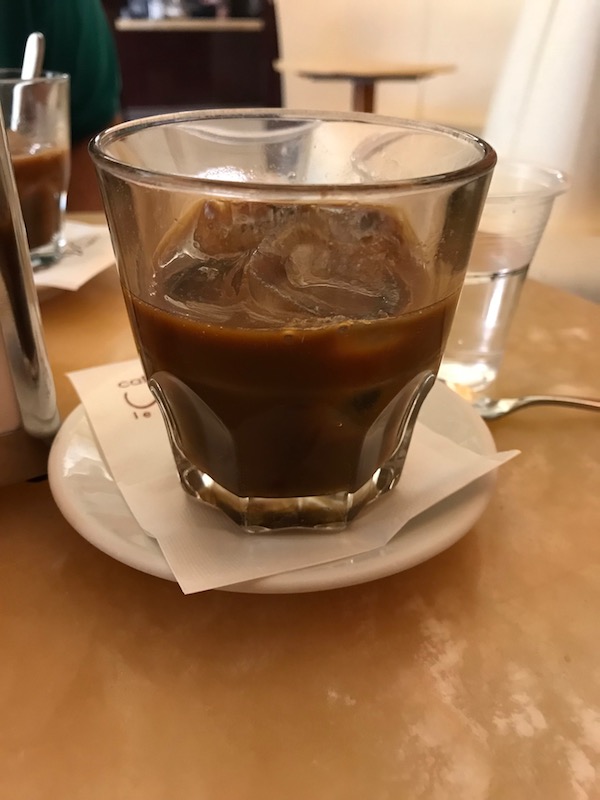
There was no way to get a good picture of Castle of Carlo V from the outside due to how big it is and how "stuck" it is in the middle of the city, but they did have a model inside. It has a trapezoidal base with four massive arrowhead bastions on each corner.

The Castle complex come from various centuries: the central structure dates from the 12th century, the Square Tower is thought to be Angevin (14th century), while the rest of the complex is from the 16th century.



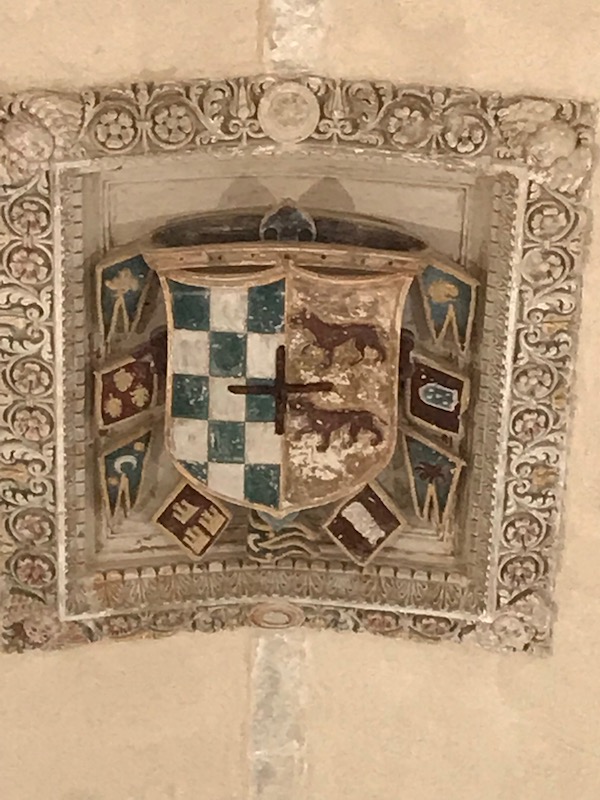


We went by the Church of Santa Chiara several times and it wasn't open, and we finally found it open at night. It was constructed in the 15th century but then given a baroque makeover between 1687 and 1691. The doorway is decorated with a tympanum with an oval niche in the middle, supported by smiling angles and a coat of arms.


Inside, every niche and surface swirls with twisting columns and ornate statuary. The ceiling is 18th-century Leccese cartapestra (papier-mâché) masquerading as wood.



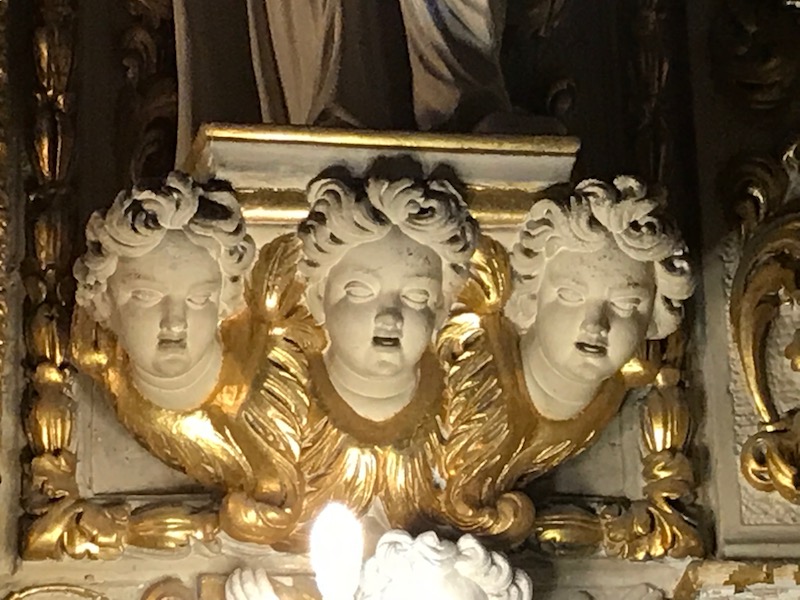

There are several chapels with richly decorated altars, with twisted columns covered with angels, birds, scrolls, garlands and sculptures. In the center of each altar is a wooden statue from the late 17th century (the first I show is Saint Francis of Assisi and the 2nd is Saint Anthony of Padua).
